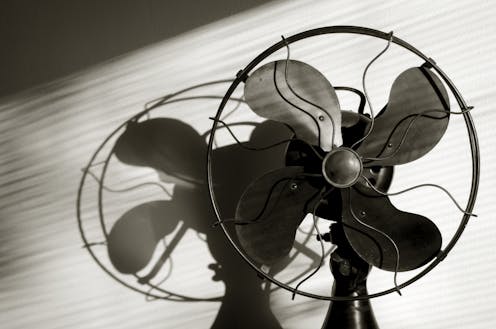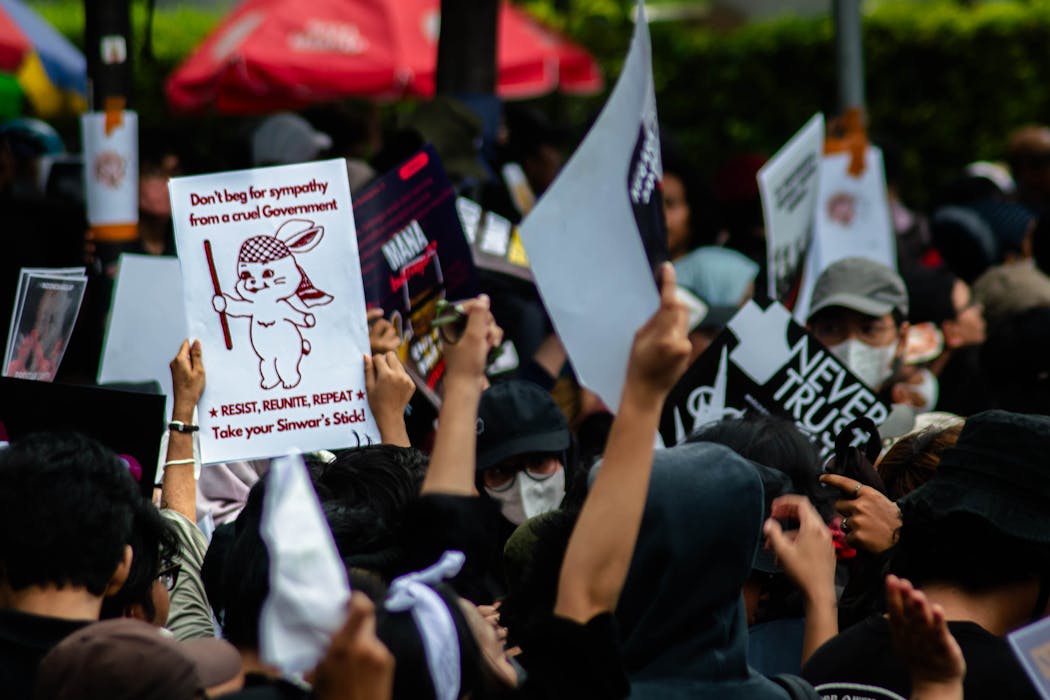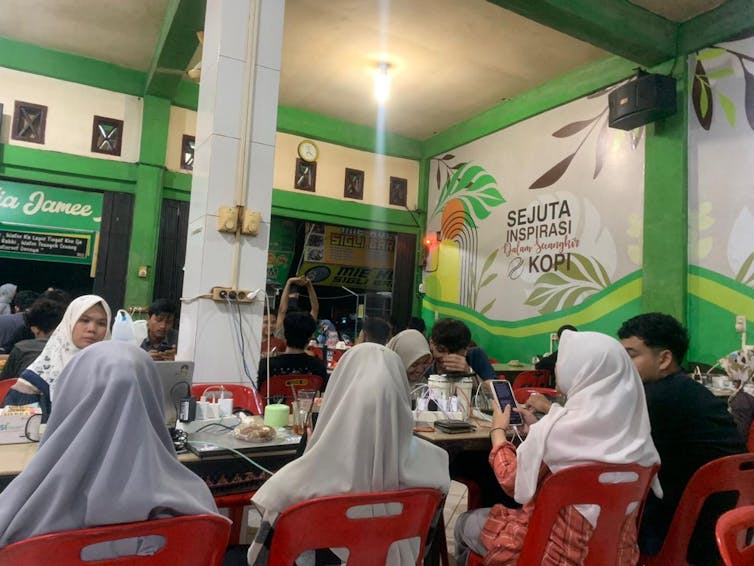America faces a power disconnection crisis amid dangerous heat: In 27 states, utilities can shut off electricity for nonpayment even in a heat wave
- Written by Sanya Carley, Presidential Distinguished Professor of Energy Policy and City Planning, University of Pennsylvania

Coast to coast, millions of Americans are experiencing sweltering temperatures this summer[1], with seemingly little relief in sight. For people who struggle to access or afford air conditioning, the rising need for cooling is a growing crisis.
An alarming number of Americans risk losing access to utility services because they can’t pay their bills. Energy utility providers in 2022 shut off electricity to at least 3 million customers[2] who had missed a bill payment. Over 30% of these disconnections happened in the three summer months, during a year that was among the hottest on record[3].
In some cases, the loss of service lasted for just a few hours. But in others, people went without electricity for days or weeks while scrambling to find enough money to restore service, often only to face disconnection again.
As researchers who study energy justice and energy insecurity[4], we believe the United States is in the midst of a disconnection crisis. We started tracking these disconnections utility by utility around the country, and we believe that the crisis will only get worse as the impacts of climate change become more widespread and more severe.
In our view, it is time government agencies and utilities start treating household energy security as a national priority[5].
1 in 4 households face energy insecurity
Americans tend to think about the loss of electricity as something infrequent and temporary. For most, it is a rare inconvenience stemming from a heat wave or storm.
But for millions of U.S. households, the risk of losing power is a constant concern. According to the most recent data from the U.S. Energy Information Administration, 1 in 4 American households[6] experience some form of energy insecurity each year, with no appreciable improvement[7] over the past decade.
For many low-income households, the risk of a power shut-off reoccurs month after month[8]. In a recent study, we found that over the course of a single year, half of all households[9] whose power was disconnected dealt with disconnections multiple times as they struggled to pay their bills.
Energy insecurity like this is especially common among low-income Americans[11], people of color, families with young children, individuals who rely on electronic medical devices or those living in poor housing conditions. During the first year of the COVID-19 pandemic, we found that Black and Hispanic households were three and four times, respectively, more likely to lose service than white households.
Along with existing financial constraints, people are facing rising electricity rates in many areas, rising inflation and higher temperatures that require cooling. Some also face a history of redlining and poor city planning that has concentrated certain populations in less efficient homes. Taken together, the crisis is apparent.
Coping strategies can put health at risk
We have found that over half of all low-income households engage in some coping strategies[12], and most of them find they need multiple strategies at once.
They might leave the air conditioner off in summer, allowing the heat to reach uncomfortable and potentially unsafe temperatures to reduce costs. Or they might forgo food or medicine to pay their energy bills, or strategically pay down one bill rather than another, known as “bill balancing.” Others turn to payday loans that might help temporarily but ultimately put them in deeper debt. In our research, we have found that the most common coping strategies[13] are also the most risky.
Once people fall behind on their bills, they are at risk of being disconnected by their utility providers.
The loss of critical energy services may mean that affected people cannot keep their homes cool[14] – or warm during the winter months – or food refrigerated during any season. Shut-offs may mean that people with illnesses or disabilities cannot keep medicines refrigerated or medical devices charged[15]. And during times of extreme cold or heat, the loss of energy utility services can have deadly consequences[16].
Where disconnection rates are highest
Our research team created the Utility Disconnections Dashboard[17], in which we track utility disconnections in all places where data is available.
In recent years, more states have required regulated utilities across the country to disclose the number of customers they disconnect. However, state regulations only apply to the utilities that they regulate. Public utilities and cooperatives, which serve over 20% of U.S. electricity customers, often aren’t covered. That leaves massive gaps in understanding of the full magnitude of the problem.
The data we do have[20] reveals that disconnection rates soar during the summer months and are typically highest in the Southeast. Large investor-owned utilities in Florida, Georgia, South Carolina and Indiana have averaged disconnection rates near 1% of customers, and some city utilities have been even higher.
Only 23 states restrict summer shut-offs
State public utility commissions place certain restrictions on the circumstances when utilities can disconnect customers, but summer heat is often overlooked.
All but a handful of states limit utilities from shutting off customers during winter months[21] or on extremely cold days. Most have at least some medical exemptions.
Yet, more than half of the states do not place any limits[22] on utility disconnections during summer months or on very hot days.
Only 23 states and the District of Columbia have such summer protections. They typically take the form of designating time periods or temperatures when customers cannot be disconnected from their service. Virginia became the most recent state with a such a policy[23], with protections going into effect on July 1, 2024.
We believe it is untenable for states to go without temperature protections in an era of climate change, as more parts of the country will increasingly experience excessive-heat days[24].
These state-level policies provide a baseline of protection. As we learned during the COVID-19 pandemic[25], moratoriums that prohibit utility disconnections can help alleviate energy insecurity.
But these policies are highly variable across the country. Moreover, details about customer protections can be difficult for people to find and understand.
Better rules and a new mindset on right to energy
As we see it, the U.S. needs more robust customer protections, with states, if not the federal government, mandating better disclosure of when and where disconnections occur to identify any systemic biases.
Most of all, we believe Americans need a collective change in mindset about energy access. That should start with a principle that all people should have access to critical energy services and that utilities should only shut off service to customers as a last resort, especially during health-compromising weather events.
The country cannot wait for deadly heat waves to prove how important it is to protect American households.
This is an update to an article originally published July 5, 2023[26].
References
- ^ sweltering temperatures this summer (theconversation.com)
- ^ shut off electricity to at least 3 million customers (utilitydisconnections.org)
- ^ among the hottest on record (www.nasa.gov)
- ^ energy justice and energy insecurity (energyjustice.indiana.edu)
- ^ national priority (doi.org)
- ^ 1 in 4 American households (www.eia.gov)
- ^ no appreciable improvement (doi.org)
- ^ reoccurs month after month (energyjustice.indiana.edu)
- ^ half of all households (doi.org)
- ^ William DeShazer for The Washington Post via Getty Images (www.gettyimages.com)
- ^ common among low-income Americans (doi.org)
- ^ engage in some coping strategies (doi.org)
- ^ coping strategies (images.theconversation.com)
- ^ homes cool (www.phoenixnewtimes.com)
- ^ medical devices charged (thehill.com)
- ^ deadly consequences (www.workers.org)
- ^ Utility Disconnections Dashboard (utilitydisconnections.org)
- ^ Energy Justice Lab (utilitydisconnections.org)
- ^ CC BY-ND (creativecommons.org)
- ^ data we do have (utilitydisconnections.org)
- ^ during winter months (utilitydisconnections.org)
- ^ do not place any limits (utilitydisconnections.org)
- ^ Virginia became the most recent state with a such a policy (www.wdbj7.com)
- ^ increasingly experience excessive-heat days (theconversation.com)
- ^ we learned during the COVID-19 pandemic (doi.org)
- ^ originally published July 5, 2023 (theconversation.com)
Authors: Sanya Carley, Presidential Distinguished Professor of Energy Policy and City Planning, University of Pennsylvania





